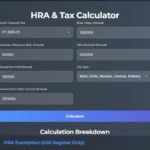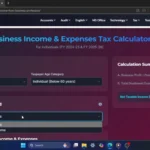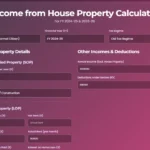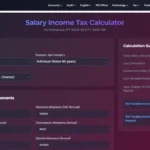What is investment?
Investment refers to acquiring an asset
With the intention to earning income in the future or
With the intention to appreciation the value of asset in future
Asset:
- Rental Property
- Vacant Land
- Term Deposit
- Shares and Bonds etc.
- Trust Units
- Crypto Asset
Earning income Example:
- Rental Income
- Lease Income
- Interest Income
- Dividend Income
- Distribution Income
Appreciation in the value of asset Example:
Hoping that above asset itself appreciates (Because of Inflation and Demand) over time, so you can sell it for a profit later.
How you can acquire shares?
- Buying shares
- Inherited shares
- Shares as a gift
- Employee share scheme
- Bonus shares
- Demerger
- Mergers and Takeovers
- Dividend reinvestment plans
- Transferred to you as the result of a marriage or relationship breakdown
I. Buying shares
A common way to purchase through a stockbroker or an Initial public offering (IPO), share purchase plans (SPP) or Right Issue.
Stockbroker some popular stock brokers (Westpac, NABTrade, ANZ)
Share Purchase Plans (SPPs) and Right Issue allows existing shareholders of a listed company to purchase additional shares directly from the company at a predetermined price (discounted price). (Not Compulsory it’s an optional to shareholders)
Key Difference between SPPs and Right Issue
- SPPs, shareholders can purchase shares up to a set maximum purchase limit per shareholder (often $30,000).
- Rights Issues allocate shares based on the current shareholding ratio.
- In case of Renounceable rights Shareholders can sell these rights in ASX if they choose not to purchase additional shares, while SPPs generally cannot be transferred.
II. Inherited shares
Generally, CGT does not apply when you inherit an asset. However, it may apply when you sell the inherited asset, depending on its type and acquisition date
To calculate CGT, you need to know the asset’s cost base, which could be based on its value when the deceased acquired it.
Qualify for a CGT discount or indexation if the asset was owned for 12 months or more, considering the deceased’s period of ownership.
III. Shares as a gift
a. Given Share as a Gift
Treat the shares as been disposed at their market value on the date you gifted (Sale Date: Date of Gifted), and calculate CGT.
b. Receive Shares as a Gift
Treat the shares has been acquired at market value on the date you received them as gift. ( (Purchase Date: Date of Gift Received)
IV. Employee share scheme (ESS)
Employee Share Scheme ESS allows employees to acquire ownership (shares) or rights to purchase shares in the company they work for. (Generally acquired share at Discounted Price or by future (right or option))
ESS programs can motivate employees and align their interests with the company’s success.
If ESS acquired at discounted Price (Difference between Market Value and amount to paid to acquire ESS) the discount you received will be reported in Label 12 Employee share schemes
V. Bonus shares
Bonus shares are extra shares you receive for shares you already hold in a company. (It’s a one-way Distributing company’s Profit)
Cost base for acquire bonus share is Zero, Date of Acquisition is the date of Bonus share issued by company.
VI. Demerger
A demerger occurs when a company restructures by splitting its operations into two or more companies
In simple word: One Company Divided into Two or More Companies
You may receive new shares or received cash for the shares or both.
VII. Mergers and Takeovers
A merger occurs when a two or more companies merged together and formed a new company or merged with another company or One company Acquired another company.
You may receive new shares or received cash for the shares or both.
VIII. Dividend Reinvestment Plans (DRP)
A company in which you hold shares may offer you the option of reinvesting your dividends to acquire more shares, instead of it being paid or credited to your bank a/c.
You must declare DRP as dividend in your Income Tax Return under Label 11 with Franking Credit.
Cost base (Purchase price for the share bought through DRP is DRP Price (Dividend Value)
IX. Transferred to you as the result of a marriage or relationship breakdown
If an asset is transferred to you under a relationship breakdown rollover, you do not pay capital gains tax (CGT) until you later dispose of it.
When you dispose of a rollover asset, you calculate your CGT as though you had owned it since your former spouse acquired it.
What is Share Registry?
A ‘share registry’ is an organisation that manages the registry of shareholders on behalf of a given company.
Responsibilities of Share registry:
- Maintaining the company’s share register (includes name and address of each member, the number of shares held, share classes, and the amount paid and unpaid on the shares etc).
- Recording changes in share ownership
- Issuing shareholding statements, Share Transaction Statement.
- Distribution of company Reports
- Managing Dividend Payments
- Handling bonuses and rights issues etc
Some popular share registry companies in Australia
- Link Market Services (Mitsubishi UFJ Financial Group), (www.linkmarketservices.com.au) (https://au.investorcentre.mpms.mufg.com/Login/MFASingleHoldingLogin)
- Computershare, (www-au.computershare.com)
- BoardRoom Limited (www.boardroomlimited.com.au)
- Automicgorup (www.investor.automic.com.au)
How can I find out which share registry manages a shareholding?
- First Identify the Share Name or Share Code from PY or From Prefill etc
- Then go to the delisted website to identify in which website share has been registered https://www.delisted.com.au/
- Now Type the Share Name or Share Code in Delisted website and select search Icon, Now the company name will display
- Select the correct company in the list
- Under Shareholders Link Section Select Registry Website Link
- Now it will take you to the Registry website
- Search for Single Holding Login Use HIN Number, Post Code, Company Name, and Company code to log in
- To get Holder Identification Number (HIN) search in PY File or Portfolio Statement, or Share statement
After Login what are the Details, you can Retrieve from share registry Website
A. Under Transaction History Section
- How many units still holding.
- How many units are purchased and sold?
- Date of Purchase and Date of Sold etc.
B. Under Payment History Section
- Dividend Received
- Amount of Dividend, Date of Dividend received
- Dividend Reinvestment Plan (DRP) etc
C. Under Document Section or Report Section
- Annual Tax Statement (ATS)
- Dividend Statement
- Distribution Statement
What is Capital Gain and what is Long Term Capital Gain?
- Profit made when you sell an asset for more than it cost to acquire.
- Capital Gain = Sale Value – Purchase Cost
- Purchase Cost Means Cost incurred to buy a share (Including Brokerage Commission and any fees etc), Ultimately what Amount you paid form bank
- Sale value is the amount you get when you sell the share, (minus Brokerage Commission and any fees etc) Ultimately what Amount you received in bank
- Long Term Capital Gain means Profit from the sale of an asset that you’ve held for more than 12 months
- ATO allowed 50% Discount on LTCG (only allowed for Individuals, Trust, Super Fund)
- 50% Discount on LTCG not allowed for Company.
How to deal with Capital Loss?
- There is no difference between Long-Term Capital Loss & Short-Term Capital Loss.
- If there is Capital Loss first adjust with Short Term Capital Gain, Balance Loss adjust with LTCG, and remaining balance is LTCG Eligible for 50% Deduction.
For Example:
During FY -2023 Following share has been sold by Individual
Telstra Share STC Loss $ 5000
BlueScope Steel Shares Sold LTC Loss $ 10000
Coles Group Sold STC Gain $ 6000
ANZ Bank Sold LTC Gain $ 16000
Solution:
| Description | Amount |
| Telstra Share STC Loss | ($ 5000) |
| BlueScope Steel Sold LTC Loss | ($ 10000) |
| Total Loss (STCL + LTCL) | ($ 15000) |
| First Adjust with STCG | $ 6000 |
| Balance Loss Adjust with LTCG | $ 9000 |
| Remaining Balance in LTCG | $7000 |
| Balance LTCG can Claim a 50% Discount (only for Individual, Trust, SF 50% Discount allowed) | $3500 |
Ultimate Goal of any Capital Gain
In Case of Purchase
Need to Find following Details
| Date of Purchase | No. of Unit Purchase | Purchase Price per Unit | Purchase Cost |
| 01/07/2022 | 1000 | $5 | $5,000 |
In Case of Sales
Need to Find following Details
| Date of Sales | No. of Unit Sold | Sale Price per Unit | Sale Value |
| 30/06/2023 | 1000 | $6 | $6,000 |
Note: Always Follow First in First Out (FIFO) Method.










